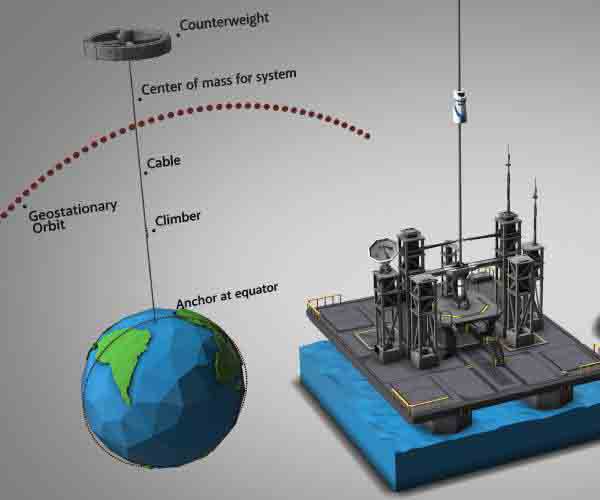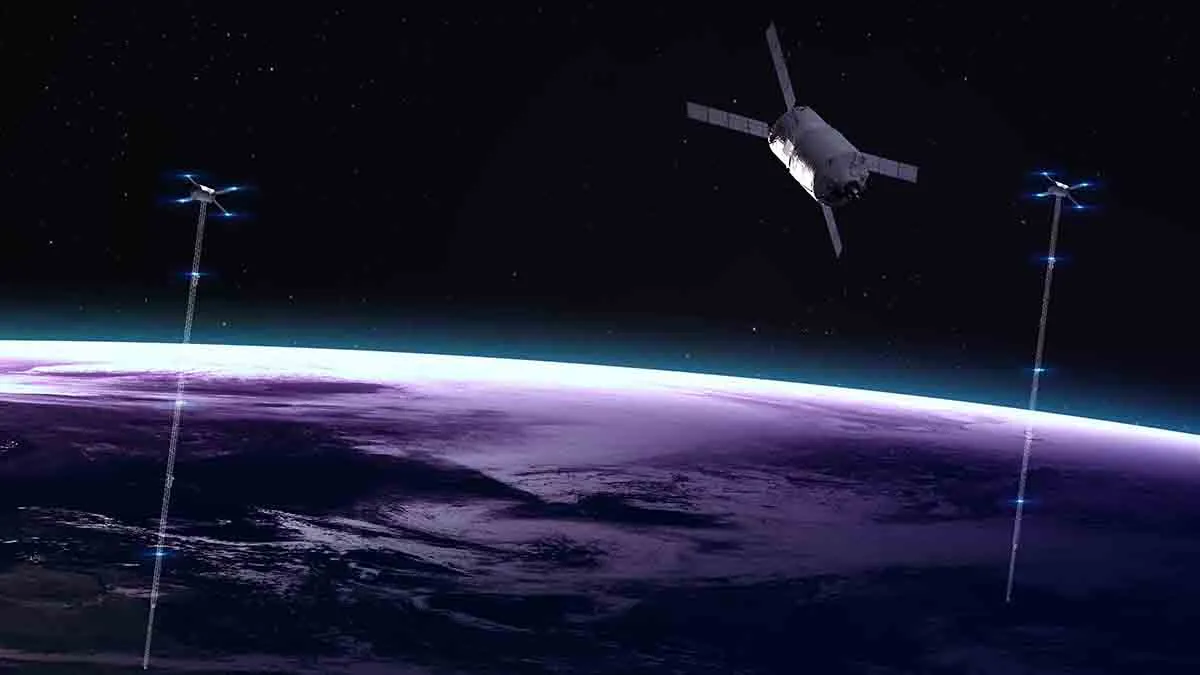Table of Contents
Sure, the idea of a space elevator just sounds too stupid to be true. But then, people once said the same thing about satellites. When Arthur C Clarke first proposed the idea of communications satellites, newspapers smirked and asked what would hold them up.
As it happens, ol’ Arfur was also a big proponent of the space elevator. He featured it in his novel The Fountains of Paradise. Former engineer Robert A Heinlein also featured space elevators in several novels.

As an idea, space elevators make great sense. Most of the cost and difficulty of space travel is incurred in simply getting out of Earth’s gravity well in the first place. Rockets are a really, really expensive way of doing that. For decades, from the 1960s, the cost of launching a payload remained stuck at over $80,000 per pound.
A major reason for this high cost was the need to build a new, expensive rocket for every launch. That really started to change when SpaceX began making cheap, reusable rockets, and today, the company is ferrying customer payloads to LEO at a price of just $1,300 per pound.
But a space elevator would knock that cost to just $100 per pound – and probably lower.
The idea is so attractive that it’s been around since the days of the Father of Rocketry, Russian scientist Konstantin Tsiolkovsky. Tsiolkovsky was inspired by an 1895 visit to the Eiffel Tower. Why not keep going up and up, all the way to space?
So why hasn’t anyone built one, yet? As Tsiolkovsky admitted, no material could support the weight of such a tower.
Another Russian engineer had at least part of the answer: don’t build up, go down. Yuri N Artsutanov proposed launching a satellite into geostationary (ie fixed above a point on Earth’s surface) orbit and dropping a tether down. Once attached, gravity and centrifugal force would keep it taut. Difficult, but doable. In theory, anyway.
According to physicist Bradley Edwards, who researched the concept for NASA about 20 years ago, it’d cost $10 billion and take 15 years to build a space elevator, but once operational, the cost of sending a payload to any Earth orbit could be as low as $100 per pound.
Compared to the cost of just a week of running yet another war, $10 billion is peanuts.
“Once you reduce the cost to almost a Fed-Ex kind of level, it opens the doors to lots of people, lots of countries, and lots of companies to get involved in space,” Edwards told Space.com in 2005.
In addition to the economic advantages, a space elevator would also be cleaner than using rockets – there’d be no burning of fuel, no harmful greenhouse emissions – and the new transport system wouldn’t contribute to the problem of space junk to the same degree that expendable rockets do.
But the problem remains: finding the materials strong enough and light enough to make the tether feasible.
“[S]teel is not strong enough, neither is Kevlar, carbon fiber, spider silk, or any other material other than carbon nanotubes,” wrote Edwards. “Fortunately for us, carbon nanotube research is extremely hot right now, and it is progressing quickly to commercial production.”
Unfortunately, he misjudged how hard it would be to synthesize carbon nanotubes – to date, no one has been able to grow one longer than 21 inches.
Further research into the material revealed that it tends to fray under extreme stress, too, meaning even if we could manufacture carbon nanotubes at the lengths needed, they’d be at risk of snapping, not only destroying the space elevator, but threatening lives on Earth.
Back to the ol’ drawing board.
Carbon nanotubes might have been the early frontrunner as the tether material for space elevators, but there are other options, including graphene, an essentially two-dimensional form of carbon that is already easier to scale up than nanotubes (though still not easy).
Contrary to Edwards’ report, Johns Hopkins University researchers Sean Sun and Dan Popescu say Kevlar fibers could work – we would just need to constantly repair the tether, the same way the human body constantly repairs its tendons.
“Using sensors and artificially intelligent software, it would be possible to model the whole tether mathematically so as to predict when, where, and how the fibers would break,” the researchers wrote in Aeon in 2018.
“When they did, speedy robotic climbers patrolling up and down the tether would replace them, adjusting the rate of maintenance and repair as needed – mimicking the sensitivity of biological processes,” they continued.
“It could be built from fibers that are already mass-produced … and relatively affordable.”
Other engineers are thinking even bigger: why bother just tethering any old satellite when you can tether the Moon?
They call their concept the Spaceline, and the idea is that a tether attached to the moon’s surface could extend toward Earth’s geostationary orbit, held taut by the pull of our planet’s gravity. We could then use rockets to deliver payloads – and potentially people – to solar-powered climber robots positioned at the end of this 200,000+ mile long tether. The bots could then travel up the line to the moon’s surface.
It’s not the wackiest idea scientists are working on, either.
California startup SpinLaunch, meanwhile, is developing a massive centrifuge to fling payloads into space, where much smaller rockets can propel them into orbit. If the company succeeds (another one of those big ifs), it says the system would slash the amount of fuel needed to reach orbit by 70 per cent.
Freethink
Still, people used to scoff at the idea of platforms floating without support hundreds of miles above the Earth’s surface, too…









